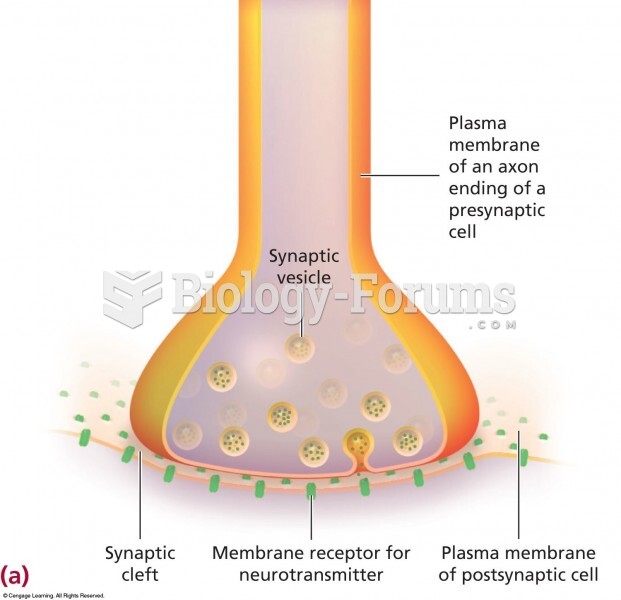|
|
|
Atropine was named after the Greek goddess Atropos, the oldest and ugliest of the three sisters known as the Fates, who controlled the destiny of men.
Vaccines cause herd immunity. If the majority of people in a community have been vaccinated against a disease, an unvaccinated person is less likely to get the disease since others are less likely to become sick from it and spread the disease.
If you use artificial sweeteners, such as cyclamates, your eyes may be more sensitive to light. Other factors that will make your eyes more sensitive to light include use of antibiotics, oral contraceptives, hypertension medications, diuretics, and antidiabetic medications.
If you could remove all of your skin, it would weigh up to 5 pounds.
Although not all of the following muscle groups are commonly used, intramuscular injections may be given into the abdominals, biceps, calves, deltoids, gluteals, laterals, pectorals, quadriceps, trapezoids, and triceps.
 Good body mechanics when facing the table directly. A. Head and back in alignment. B. Legs and feet ...
Good body mechanics when facing the table directly. A. Head and back in alignment. B. Legs and feet ...
 Apply passive touch on the shoulder and hip. Stand in back and place one hand on the shoulder and ...
Apply passive touch on the shoulder and hip. Stand in back and place one hand on the shoulder and ...





